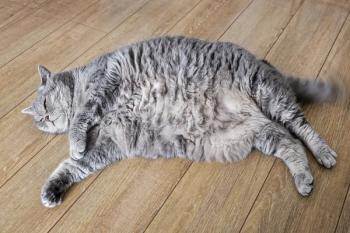
AAFP, ISFM publish guidelines to help improve feline care, compliance
Hillsborough, N.J. - With feline visits still on the decline, the American Association of Feline Practitioners (AAFP) and the International Society of Feline Medicine (ISFM) have developed a new set of guidelines that they hope will make trips to the veterinarian less stressful for cats.
HILLSBOROUGH, N.J. — With feline visits still on the decline, the American Association of Feline Practitioners (AAFP) and the International Society of Feline Medicine (ISFM) have developed a new set of guidelines that they hope will make trips to the veterinarian less stressful for cats.
Feline stress was cited as one of the top reasons pet owners avoid taking their cat to the veterinarian in recent studies. The new guidelines, endorsed by the American Animal Hospital Association (AAHA), were developed by a team of experts in feline medicine and behavior to alleviate pet owners' fear of bringing their cat to the veterinarian and the cats' stres—as well as make the visits safer for veterinary staff.
The guidelines outline early warning signs of feline fear and anxiety, such as changes in body posture and facial expressions.
Suggestions for preparing feline patients for a trip to the veterinarian include:
- rehearsing visits to the practice
- offering client education classes
- rehearsing clinical examinations
- working on adapting cats to carriers
- finding the cat well ahead of the time the pet owner must leave for the clinic
- bringing items with a familiar scent
- notifying veterinary staff in advance if the cat is easily upset
- remaining calm so the cat doesn't feed off owner or staff stress
- possible use of anxiolytics and/or anti-nausea medication
- and planning in advance for the cat's return home.
Veterinarians can help create a better environment for cats at their practices by managing odors that could make cats unsettled, using synthetic feline facial pheromone analog diffusers or sprays, minimizing visual and auditory input and limiting access to resident cats at the clinic, if any, when patients exhibiting stress are brought into the hospital.
The guidelines suggest setting up different times of day for cat and dog appointments, with cat appointments occurring when the hospital is more quiet.
More tips on examining cats exhibiting signs of stress or anxiety can be found in the full guidelines document at
Panel experts who participated in compiling the guidelines include: Chair Donna Stephens Manley, DVM; Co-Chair Ilona Rodan, DVM, Dipl. ABVP; Co-Chair Eliza Sundahl, DVM, Dipl. ABVP; Co-Chair Hazel Carney, DVM, MS, Dipl. AVBP; Anne-Claire Gagnon, DVM; Sarah Heath, BVSc Dipl. ECVBM-CA CCAB MRCVS; Gary Landsberg, DVM, MRCVS, Dipl. ACVB, Dipl. ECVBM-CA; Kersti Seksel, BVSc(Hons), FACVSc, Dipl. ACVB, Dipl. ECVBM-CA; and Sophia Yin, DVM, MS.
Newsletter
From exam room tips to practice management insights, get trusted veterinary news delivered straight to your inbox—subscribe to dvm360.






